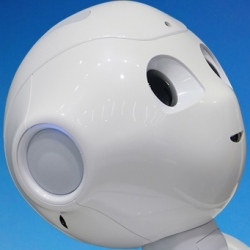
Will you still be doing your job in 5-10 years or will a robot do it for you? This is a question knowledge workers have started asking themselves as AI is becoming more capable and widely adopted. Atlassian cofounder and CEO Mike Cannon-Brookes has said AI will play a major role in the future of team productivity. Well, here is why.
Bank of America and Merrill Lynch predicts that AI will have a $9 trillion impact on knowledge work over the coming decade. The McKinsey Global Institute says AI is driving transformation of society at a rate of “3,000 times the impact” of the Industrial Revolution. CB Insights analysis shows funding for AI companies is increasing year-over-year. Broad trends and real-world results mean AI and bots can’t be ignored as empty hype any more.
Rather than being fearful of AI, our opportunity is to embrace its potential to enable entirely new ways of operating in our organizations and allow us to apply our knowledge to higher value activities.
Understanding AI in business
There are two basic ways to understand the world of AI: artificial general intelligence (general AI, or AGI) and narrow artificial intelligence (narrow AI). Narrow AI is the use of machines to intelligently solve specific problems, while general AI is a machine or group of machines that have the complete cognitive capabilities of a human. Contrary to what the science fiction movies might suggest, general AI is still a long way off.
The main challenge to general AI is that, well, we don’t fully understand what consciousness is. Philosophers have advanced their thinking beyond Descartes’ concept of body and mind to the understanding that our brains give rise to consciousness, but neuroscientists and others still don’t understand what it is, let alone how to recreate it.
We don’t have the hardware, yet. According to futurist Ray Kurzweil, it won’t be until after 2020 that the necessary hardware at the right price point is available for emulating human intelligence.
We don’t have the software. As impressive as a computer winning a complex game like Go or as great as better-than-human speech understanding sounds, these are just small pieces in a larger puzzle that needs to be solved.
By way of example, the OpenWorm project has only just started the process of simulating a creature as simple as a worm. Despite the extensive understanding of Caenorhabditis elegans (the worm being simulated) there are still many questions about how to go about recreating it and its limited intelligence.
Narrow AI, on the other hand, is already having an impact and is rapidly spreading into more areas. It has been influencing our everyday lives for years now, whether we are getting advice on stock purchases or being recommended a book on Amazon. Narrow AI has been delivering value by using large, structured datasets to solve problems that have clear outcomes or rules. It is now reaching beyond this area.
The possibilities for bots and AI to assist and participate in teams are opening up. The key drivers behind this are:
Data is accessible. Tasks, issues, timelogs, source code, test results, and all the other things you use to build software are sitting in a system somewhere. The systems holding team data are getting easier and easier to access due to APIs, support for add-ons, or their cloud-based nature.
Data is messy. The data teams use is messy. It’s not anyone’s fault, it’s just the nature of work. Due to time constraints and release pressures, it’s hard to find the time to clean things up while a team is in motion (which is always). But that isn’t necessarily a problem now because of the advancements being made in dealing with unstructured data.
Dataset size isn’t an issue. Compared to the massive datasets of Amazon, Facebook, and Google, the dataset sizes of most teams are very small. Teams usually only have tens or hundreds of tasks. Even larger teams with thousands of tasks would have, statistically speaking, a small dataset. Advancements in algorithms for small datasets mean that narrow AI can start producing meaningful results for teams.
Team process standardization. Most teams, across organizations and around the world, are now settling on essentially similar processes and approaches to how they work. The pervasiveness of agile in software development teams is one example of this. The implication for narrow AI is that it’s easier to be more useful to a greater number of people. This also means it is possible to combine data across organisations to create larger datasets.
Productivity improvements now outweigh inaccuracy. As the algorithms are evolving, there are still inaccuracies. However, the benefits gained, either by reduced costs, increased speed, or increased insight, now outweigh the flaws, inaccuracies and, for some chatbots, annoyances present in narrow AI.
